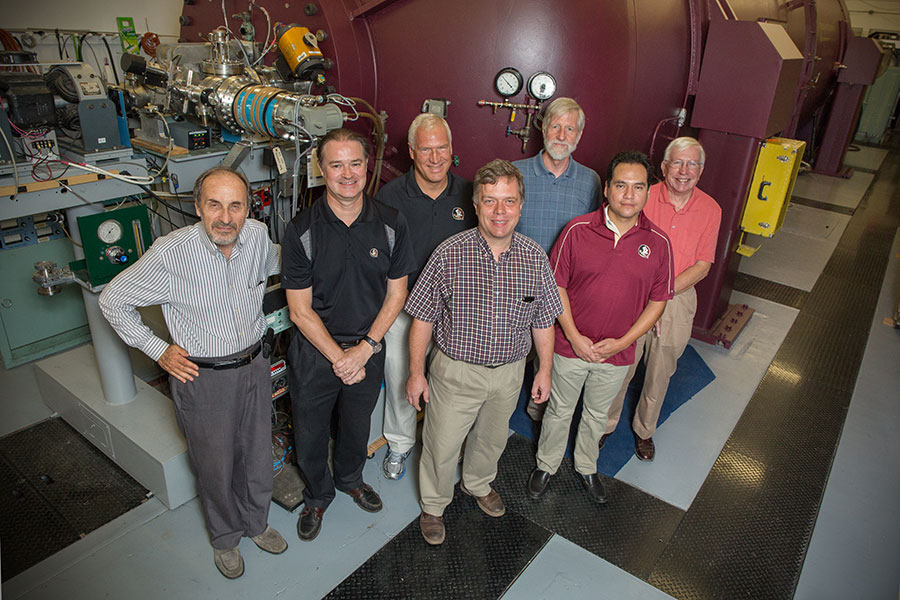
A team of Florida State University physicists has won a $4.5 million grant from the National Science Foundation to probe deeper into the world of nuclear physics and nuclear astrophysics.
Physics Professors Ingo Wiedenhoever, Paul Cottle, Mark Riley, Samuel Tabor, Assistant Professor Sergio Almaraz-Calderon and research faculty Anthony Frawley operate the John D. Fox Superconducting Accelerator Laboratory at Florida State, which performs cutting-edge research in nuclear physics and nuclear astrophysics.
“This grant continues the fantastic tradition of this laboratory and brings it to the next level,” Wiedenhoever said. “We are so excited to continue our work, and the group keeps moving forward.”
In addition to funding the operational aspects of the laboratory and enabling the research of the experimental nuclear group at national laboratories, the funding will also support 12 graduate students and two research faculty. Having an on-site accelerator laboratory allows the faculty teach and train students and provide hands-on experience in a wide range of areas. In the past three years, nine students in the group have received doctoral degrees and immediate job offers.
The lab has been in existence at Florida State since 1958 when then-Gov. Leroy Collins established the university’s nuclear physics program. The program has become one of the top producers of doctoral degrees in nuclear physics in the country and hosts collaborators from a number of different institutions, including Louisiana State University, Indiana University, University of Catania (Italy), I-Themba Labs (South Africa), Argonne National Laboratory and Savannah River National Laboratory.
It has also been externally funded for nearly six decades with new faculty joining the team as more senior ones have retired. Almaraz-Calderon, a nuclear astrophysicist is the most recent addition to the group.
“The lab constantly reinvents itself as we get new people with different strengths,” Wiedenhoever said.
The lab has also made significant improvements in the past few years with the help of the National Science Foundation, the FSU Department of Physics, the College of Arts and Sciences and the Office of Research.
Most recently, a large magnetic spectrograph was added, which will allow scientists to get high-resolution spectral images of charged particles produced in a nuclear reaction. This new spectrograph will enable the FSU scientists to study important details of nuclear reactions that take place, for example, in stars and stellar explosions.
“Nuclear science is everywhere in the cosmos,” Wiedenhoever said. “This spectrograph will allow us to expand our horizon tremendously.”



